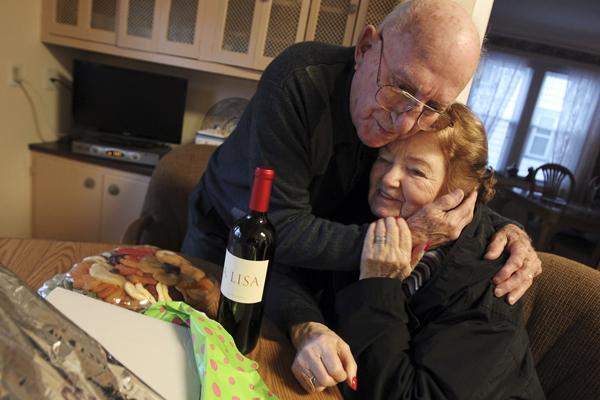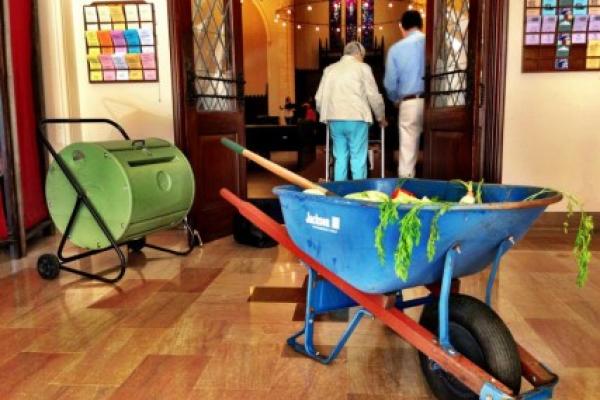The fire in the Chaman e Babrak camp in Kabul, Afghanistan, began in Nadiai’s home shortly after noon. She had rushed her son, who had a severe chest infection, to the hospital. She did not know that a gas bottle was leaking; when the gas reached a wood-burning stove, flames engulfed her mud hut and extended to adjacent homes, swiftly rendering nine extended families homeless and destitute in the midst of already astounding poverty. By the time seven fire trucks had arrived in response to the fire at the refugee camp, the houses had burned to the ground.
No one was killed. When I visited the camp, three days after the disaster, that was a common refrain of relief. Nadiai’s home was on the edge of the camp, close to the entrance road. Had the fire broken out in the middle of the camp, or at night when the homes were filled with sleeping people, the disaster could have been far worse.
Even so, Zakia, age 54, who also lives in the camp, said this is the worst catastrophe she has seen in her life, and already their situation was desperate.
It’s been almost 70 years, but Marsha Kreuzman still remembers the moment she laid outside the steps of a Nazi crematorium wishing she could die.
Kreuzman had already lost her mother, father, and brother to the Holocaust, and death seemed inevitable, she said.
But then an American soldier picked up her 68-pound body and whisked her to safety.
“I wanted to kiss his hand and thank him,” she said. “From the first day I was liberated, I wanted to thank them, but I didn’t know who to thank.”
Since then, the now-90-year-old Holocaust survivor has been on a decades-long quest to find American soldiers who liberated the Mauthausen concentration camp, one that didn’t have any success until she met Joe Barbella, two months ago, quite by chance.
California pastor Ryan Bell has a novel New Year’s resolution. For one year, he proclaimed, he will “live without God.”
It’s an odd resolution for an ordained minister, former church pastor, teacher at two highly regarded Christian universities, and church consultant. Yet for the next 12 months, Bell, 42, plans to refrain from praying, reading the Bible, and thinking about God at all.
Instead, he will read atheist authors, attend atheist gatherings, and seek out conversation and companionship with unbelievers. He wants to “do whatever I can to enter the world of atheism and live, for a year, as an atheist.”
Still, his resolution is only an experiment — he is not, he said, an atheist. “At least not yet,” he wrote in an essay for The Huffington Post, where, on New Year’s Eve, he announced his plan and a new blog to document it.
The wheelbarrow outside the sanctuary was overflowing with vegetable scraps; decomposing matter filled the baptismal font; and a pile of rich brown soil replaced the Communion table.
Ashley Goff, minister for spiritual formation at Church of the Pilgrims, wanted to convey a message about the cycle of nature this fall, and she could think of no better analogy than the congregation’s growing enchantment with compost.
“I wanted them to see the process of life and death and change,” she said of her Presbyterian Church (USA) congregation of 70. “It’s a dying and a rising, where new life begins.”
Across the country in the past decade, hundreds of houses of worship have started composting, relating it to theological concepts of resurrection and stewardship.
Jesus was breast-fed.
It’s a point often made by mothers who want to breast-feed in church, but know others would prefer that they retreat to the nursery, or find an out-of-the-way bench. Another point they make: Breast-feeding is part of God’s plan — so of all places, why not in church?
“Breasts were made to feed a baby,” said Misti Ryan, a devout Christian lactation consultant in Texas whose business has a cross in its logo.
A mother can breast-feed modestly and should be allowed to nurse in church if she wants to, said Ryan, who has nursed five children in her Baptist congregation. “The church needs to go there.”
Pope Francis did go there last month, in his much-noted comment to a journalist about a young mother and infant who had come to a recent general audience:
“She was shy and didn’t want to breast-feed in public, while the pope was passing,” Francis recalled. “I wish to say the same to humanity: Give people something to eat! That woman had milk to give to her child; we have enough food in the world to feed everyone.”
One of my favorite quotes of 2013 comes from Pope Francis. Asked what he would say about a member of the Catholic clergy who is gay, he responded with a question of his own.
“Who am I to judge?” Francis replied.
A good question for all of us, no?
Our world is inundated with judgment. Social media can be a swamp of it. Recently, a television celebrity was judgmental about those who are different from him and got in trouble for it. Many defended his judgmental attitude and words.
Which raises some important questions for all of us: Is it good to be judgmental? Isn’t life about making judgment calls and living by our values? Aren’t we all judgmental in some ways?
We all make judgments every day, decisions about what we think is best to do in the various circumstances of our lives. We might see someone in need and decide to help. We might recognize one of our shortcomings and decide we’ll change. We might run into an unforeseen challenge and try to figure out the best way to respond.
That’s all well and good.
Being judgmental is a very different thing.




